In this article
Do you easily get fooled by your little Havanese’s cuteness? Of course, you do; who wouldn’t? With their small size, affectionate nature, and knack for getting into mischief, these dogs always bring a smile to our faces. Not only that, but they also make great pets!
Havanese dogs are also easily trainable but can sometimes trick you into skipping training sessions. But things won’t be challenging if you go about it the right way! You should be a little strict but also use positive reinforcement with healthy treats and fun during their training sessions. Otherwise, your pup may try to find excuses to skip their training.
Start by understanding how your pet thinks, and see what motivates them the most. Then, develop your training techniques and make your pup adaptable to them gradually.
Havanese love being close to their parents, so a positive approach can easily give you your desired results. To get you started, here are 14 tips to help you out:

The 14 Tips to Train Your Havanese
1. Keep Your Training Durations Short
When training your dog, keep your sessions short and precise. It will prevent your pet from getting tired. Remember, adults and puppies have varying attention spans.
A pup can only last for a few minutes, so 1 to 2 minutes multiple times a day would be ideal. On the other hand, you can go up to 20 minutes with an adult Havanese.
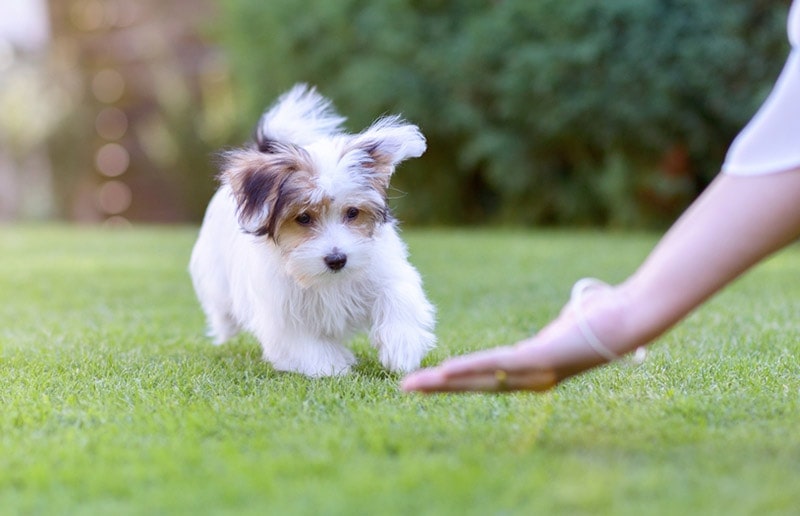
2. Always Be Positive
Training should always be positive for your Havanese. Positive reinforcement encourages your pet to perform better and learn things more easily. It includes tasty treats, verbal appreciation, and excessive petting.
You can use positive reinforcement whenever your pet follows an instruction correctly, eliminates at the right place, or acts appropriately. The more cheerful the training, the more your dog will behave well.
Remember not to overdo the treats. Instead, cut them into pea-sized pieces and give them in limited quantities.
3. Be Consistent
Consistency and patience are the two critical factors in training your Havanese. Incorporate this behavior when giving commands. For example, when crate training your pet, use the same words in the exact tone and point your finger at the crate.
Ensure to keep your other friends and family members in the loop about your pet’s training so they follow it exactly when you’re not around. Inconsistency may make your Havanese confused about their behavior and learning.
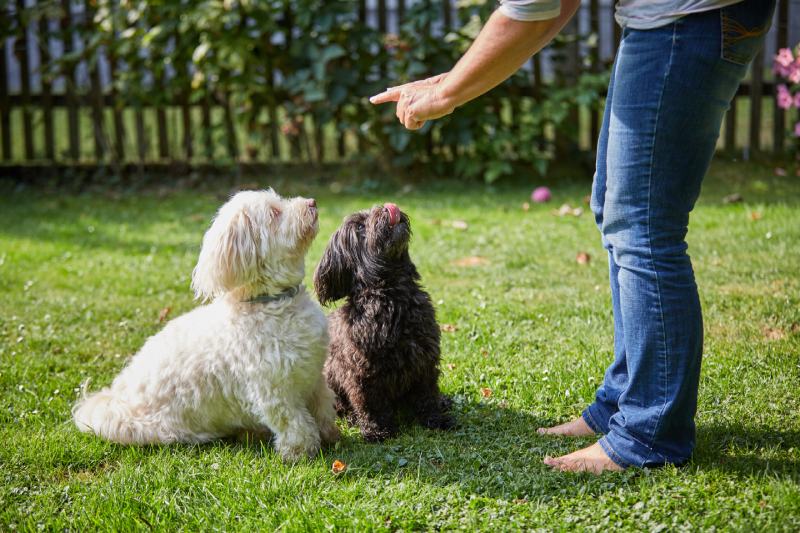
4. Don’t Repeat a Command More Than Once
Havanese can be stubborn if you keep ordering them the same command repeatedly. Some dogs can quickly master a command in just a few repetitions. If you command your Havanese the same thing repeatedly, they may ignore it and do whatever pleases them. Be sure to instruct them in a friendly tone as well.
5. Discourage Your Puppy’s Bad Behavior
Havanese puppies are very adorable and often get into mischief. Unfortunately, many pet owners confuse their pup’s bad behavior with cuteness and don’t discourage their bad acts. While that might be okay when the puppy is little, it can be troublesome in the long run.
If you don’t discourage your Havanese’s bad behavior, it may chew on household items, jump on people, and get involved in destructive activities. Your pet will think that it is in charge and will do anything they want.
Let’s be clear—no one likes a badly behaved dog. So, say “No!” to stop your pet’s bad behavior. You can also try ignoring their misbehavior, so they will know that they won’t get your attention when acting out.
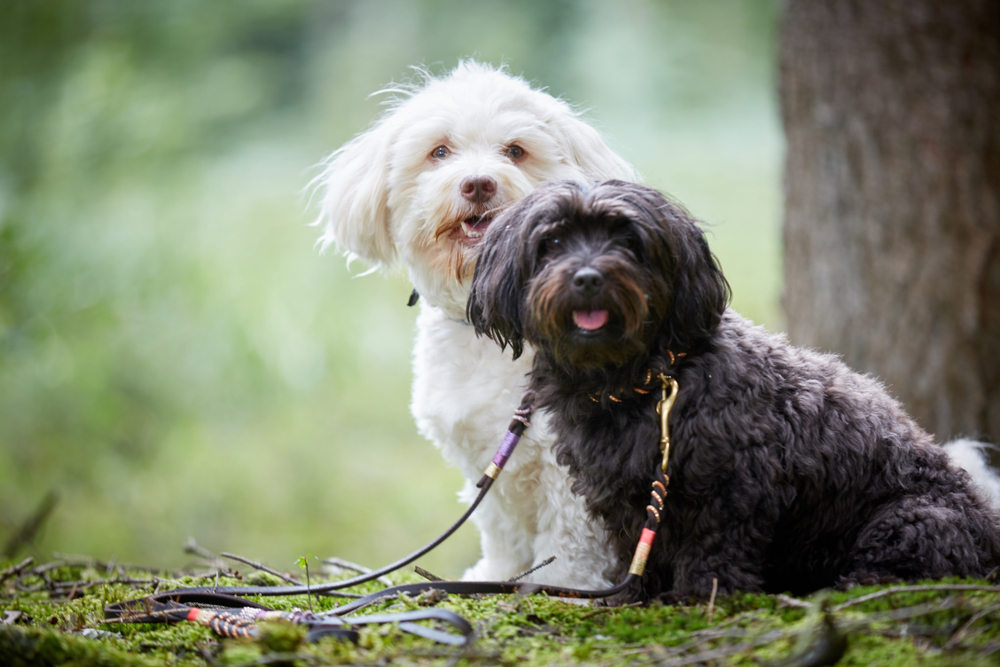
6. Purchase the Right Crate for Your Havanese
The right crate can make things no less than heaven for your pet. Many pet owners don’t focus on getting the ideal crate for their Havanese when training them, so they end up being frustrated. But the truth is, a good crate not only protects a Havanese from threats but also makes them feel comfortable during the training.
Before buying one, measure the size of your dog and get a crate with enough space for them to move around comfortably. However, it shouldn’t be too big, or your pet will think making a bathroom area inside is okay.
7. Make the Crate Comfortable
The right crate will only show its magic when you make it comfortable for your furry friend. Start by putting a soft blanket in the crate and draping a towel on its top to make your Havanese feel like they’re in a den. Add your pet’s favorite toys and spill-proof food and water bowls to the crate.
However, make sure you’re not isolating your Havanese from your family. These dogs love to stay close to humans, especially their owners, so putting their crate far away will make them uneasy and lonely.
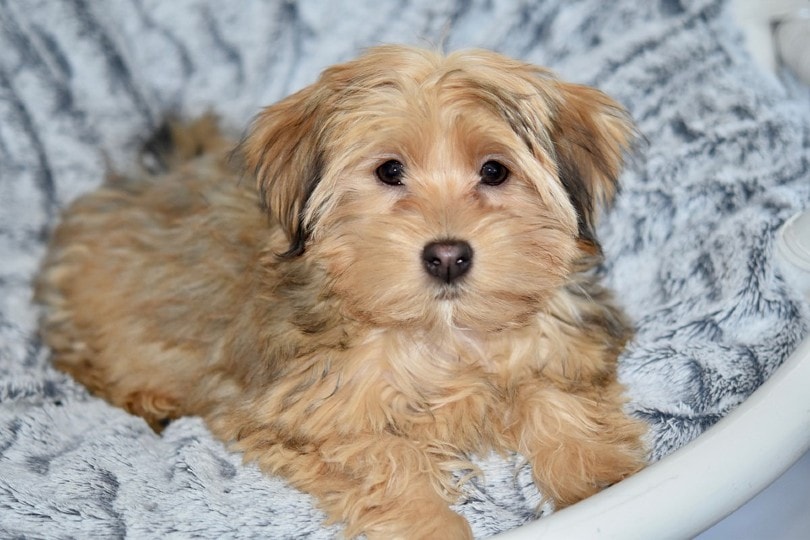
8. Motivate Your Pet to Use Their Crate
Have you made your puppy’s crate comfy, but they still won’t use it? So, where did you go wrong? You probably did everything right, but you forgot to make it “inviting” for your pet. But don’t worry, most dogs feel shy or hesitant when they see a crate for the first time. This means you now need to encourage your Havanese to enter the crate.
To lure them in, you can place bits of their favorite treats close to and inside the crate. It could take your Havanese a few minutes or days to get comfortable with it, so be patient and don’t try to force them in. Once your Havanese enters the crate, pat them on the head and tell them they’ve done a good job. This way, they will create a positive association with the space.
More importantly, you should initially leave the crate’s door open to allow your dog to be comfortable with its new environment. Once it seems cozy, you can start giving them meals while inside.
9. Shut the Crate’s Door During Meals
You should close the crate’s door after several days, especially during meals. Initially, shut the door for a few minutes and open it before your pet finishes the meal.
Repeat this process with every meal and increase the time gradually until you can keep the door closed for up to 15 minutes after the meal. You may hear your pup whining during this part of the crate training.
Whining could mean that you increased its door-closing time too quickly. But don’t open the door even then. If you do, your Havanese may think whining can get them out every time. So instead, try shortening the door-closing time and go slower.
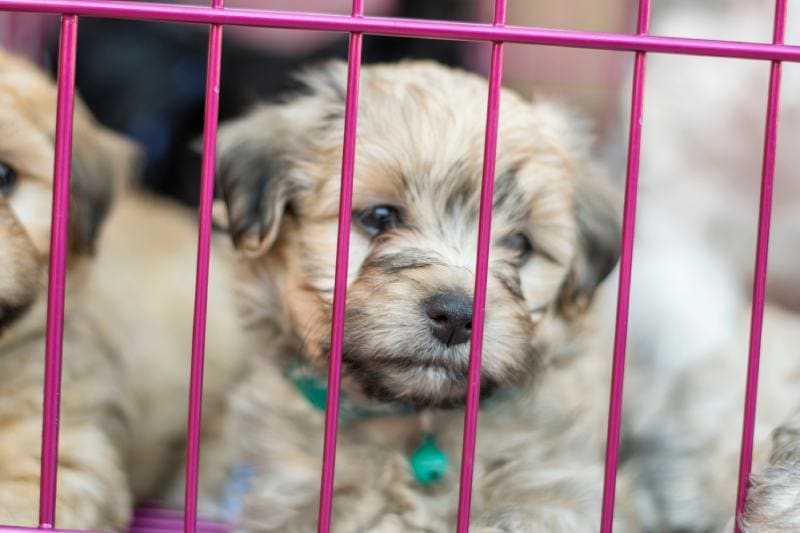
10. Leave the Room When the Crate’s Door Is Shut
When your Havanese seems relaxed with the closed door, you can leave them alone in the room. While that’s primarily for mealtimes, train your pet outside the crate training with verbal commands.
Start by leaving the room for up to 5 minutes and return right after. When you think they’re comfortable enough, work your way up to 30 minutes. You can also try leaving and returning the room at random time intervals. With enough practice and patience, you and your Havanese will be well on your way to successful crate training!
11. Train Your Havanese for Longer Crate Times
Once your pet seems relaxed with the crate’s closed door, you can take their training to the next level. Start leaving your Havanese for extended periods in the crate and see whether they can handle it.
You can leave them in the crate for hours when you’re not at home or overnight. However, Havanese dogs are susceptible to separation anxiety if you leave them in the crate for too long. So, ensure you’re keeping your pet busy in the crate with toys, food, and puzzles.
Another concern during crate training is that puppies can’t hold their pee for long periods. So, only leave your pet alone for as long as they can manage it. Always do the math – puppies can, on average, hold their pee for 1 hour more than their age. This means your 4-month-old may only be able to control its bladder for up to 5 hours.
Always give your Havanese a chance to go to the bathroom after taking them outside the crate. If you’re crate training your dog overnight, you must let them eliminate throughout the night. Your Havanese can also alert you about their toilet time by pawing at the crate’s walls or whining.
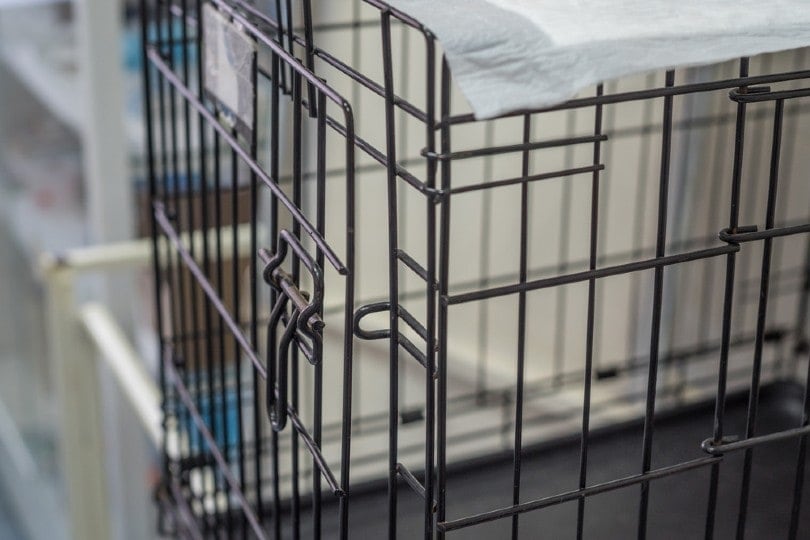
12. Learn How to Manage Your Dog’s Whining
Your Havanese may whine a lot during the training. Prepare your mind for it beforehand to not fall into their cute traps. It’s natural for dogs to whine in their initial training sessions.
As a pet owner, you must determine why your dog is whining. Do they need to free their bladder or just need attention?
Puppies usually whine to tell their parents they need to pee. So, always take your pup for elimination before going into their crate. But sometimes, they may just want attention. Give them a few minutes of affection and let them settle themselves. If the whining stops, that’s probably what they were after.
13. House Train Your Havanese
Potty training is an essential yet challenging task for pet owners. If your Havanese is already crate trained, house training them will be relatively easier for you since they know when and where to defecate or urinate.
Just be patient and never punish or scold for any accident. Instead, clean after it and tell your pet it’s okay to make a mess sometimes. Use an enzymatic cleaner to make the area completely clean and bacteria-free.
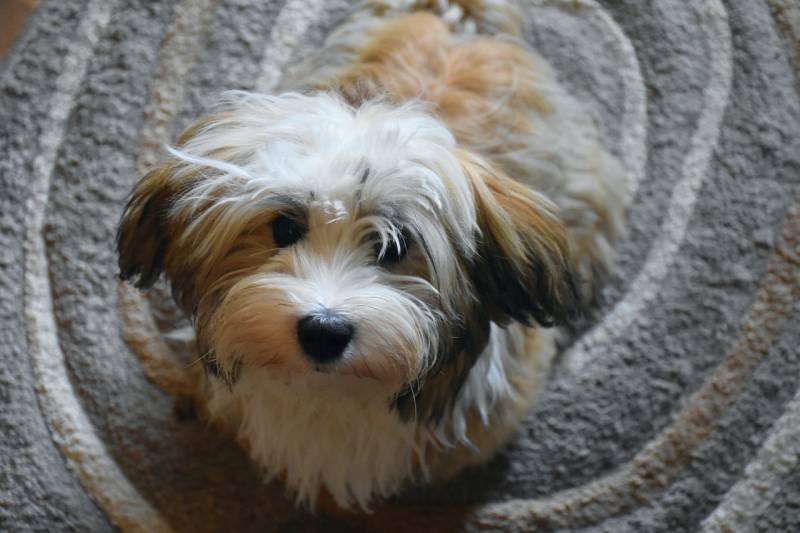
14. Make a Bathroom Schedule
Developing a bathroom schedule is crucial when potty training your Havanese. As you know, puppies must pee more frequently than adults, so a schedule will keep them well-organized.
Your pup must use the bathroom after having meals and waking up after a nap, not to mention before their bedtime. Comparatively, an adult Havanese will need to pee a few times a day before sleeping and after eating.

Conclusion
Havanese are affectionate, loving, and easily trainable dogs. Their cuteness often gets the best of their owners, and they successfully trick them into skipping their training sessions. However, you can go a long way with the right approach.
The key is to be consistent, patient, and positive with your pet and never force them to do anything. Crate training helps a lot in making your pet well-behaved. Always choose the correct crate to ensure your pet’s comfort and safety during training.
See Also:
- Do Havanese Like Water? How to Teach Them to Swim
- How Long Can Havanese Dogs Hold Their Bladder? 5 Tips for Leaving Them Alone
Featured Image Credit: Christian Mueller, Shutterstock


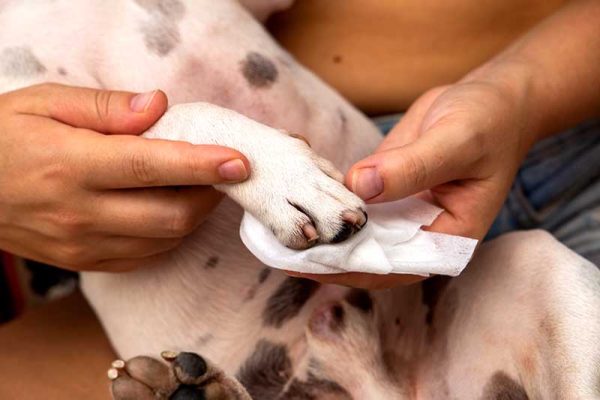
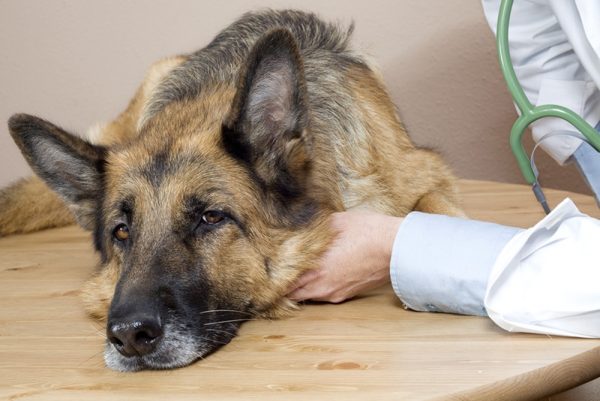




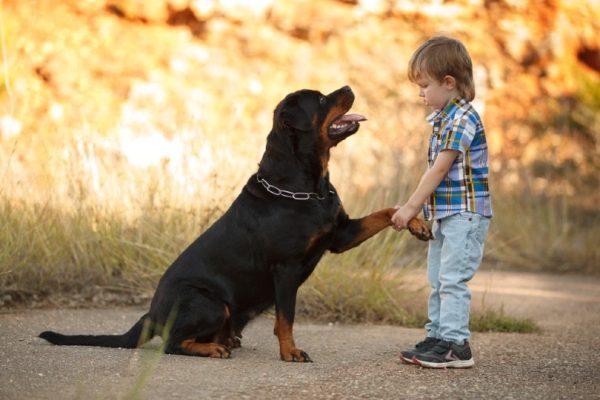

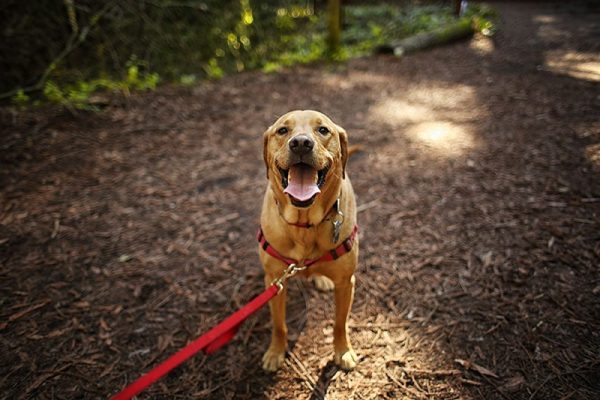









2 Responses
Can I train my Havanese to bring my medication and to sit on me for compression sits for my PTSD?
Hi Ziinah, thanks for getting in touch. Yes, you can train your Havanese with tasks like that. They're a very intelligent breed and love to please, so they are more than capable of learning new tasks that will support your emotional and physical needs. Just make sure your medication is in a dog-safe container that's easy to carry but can't be chewed open. 🙂